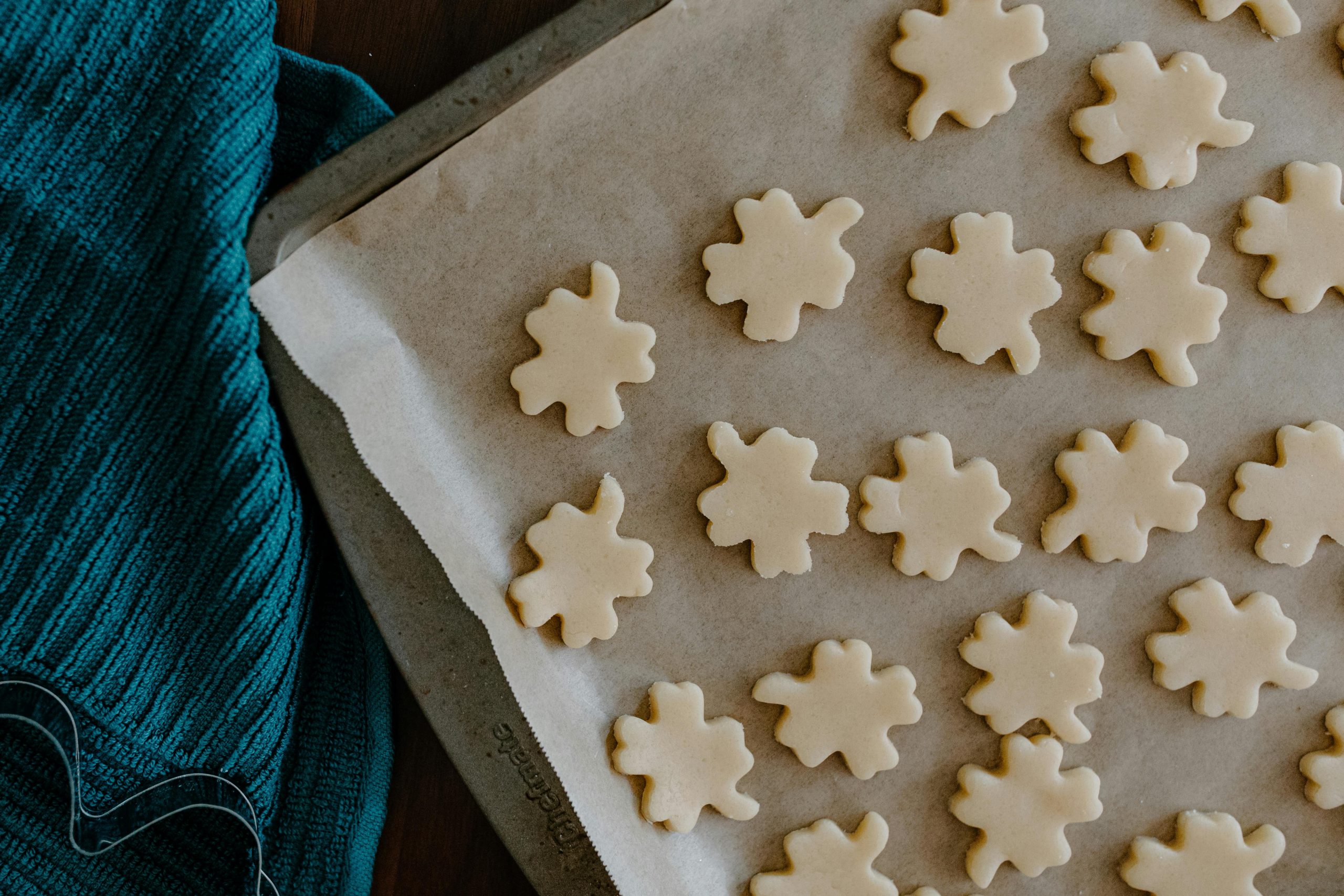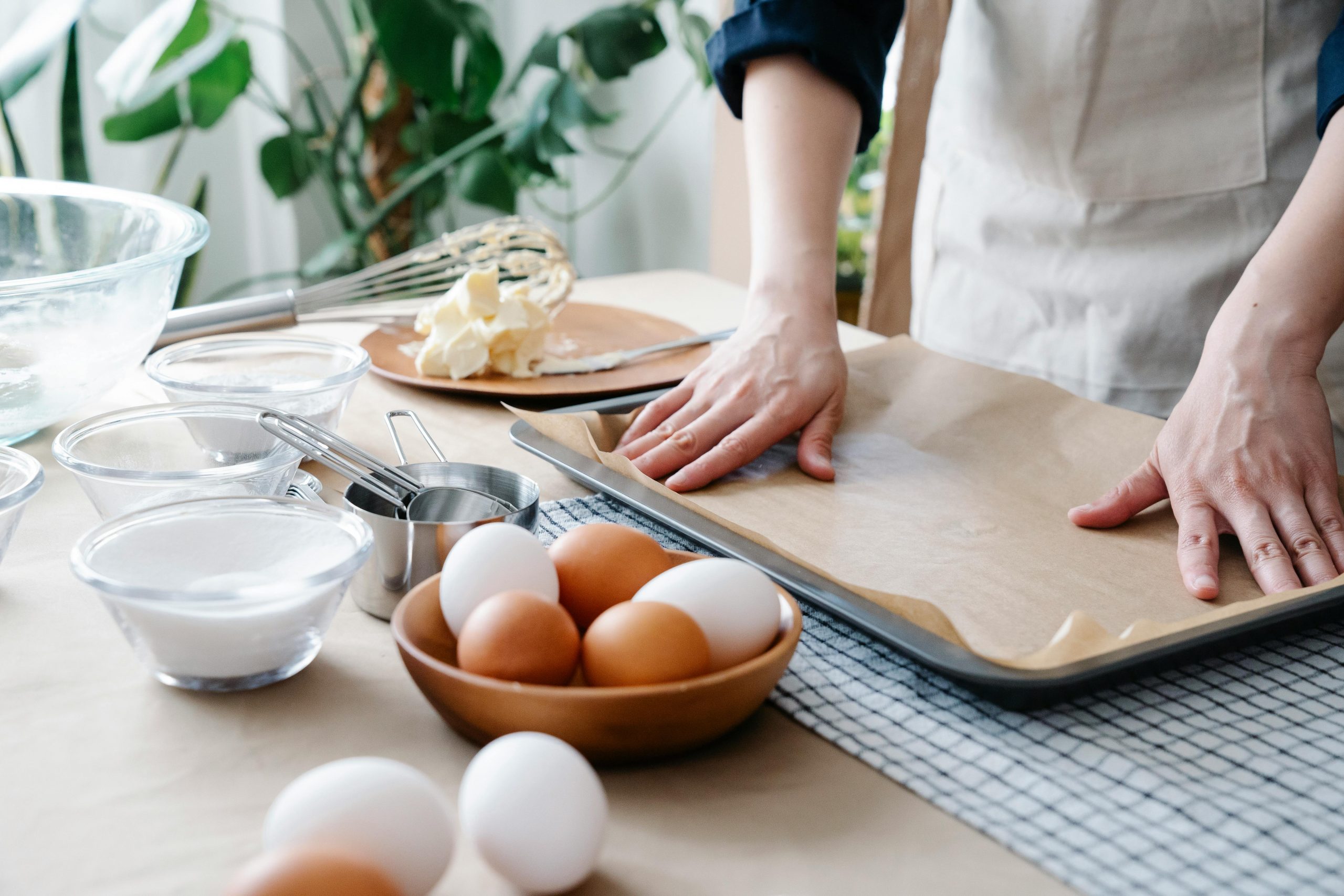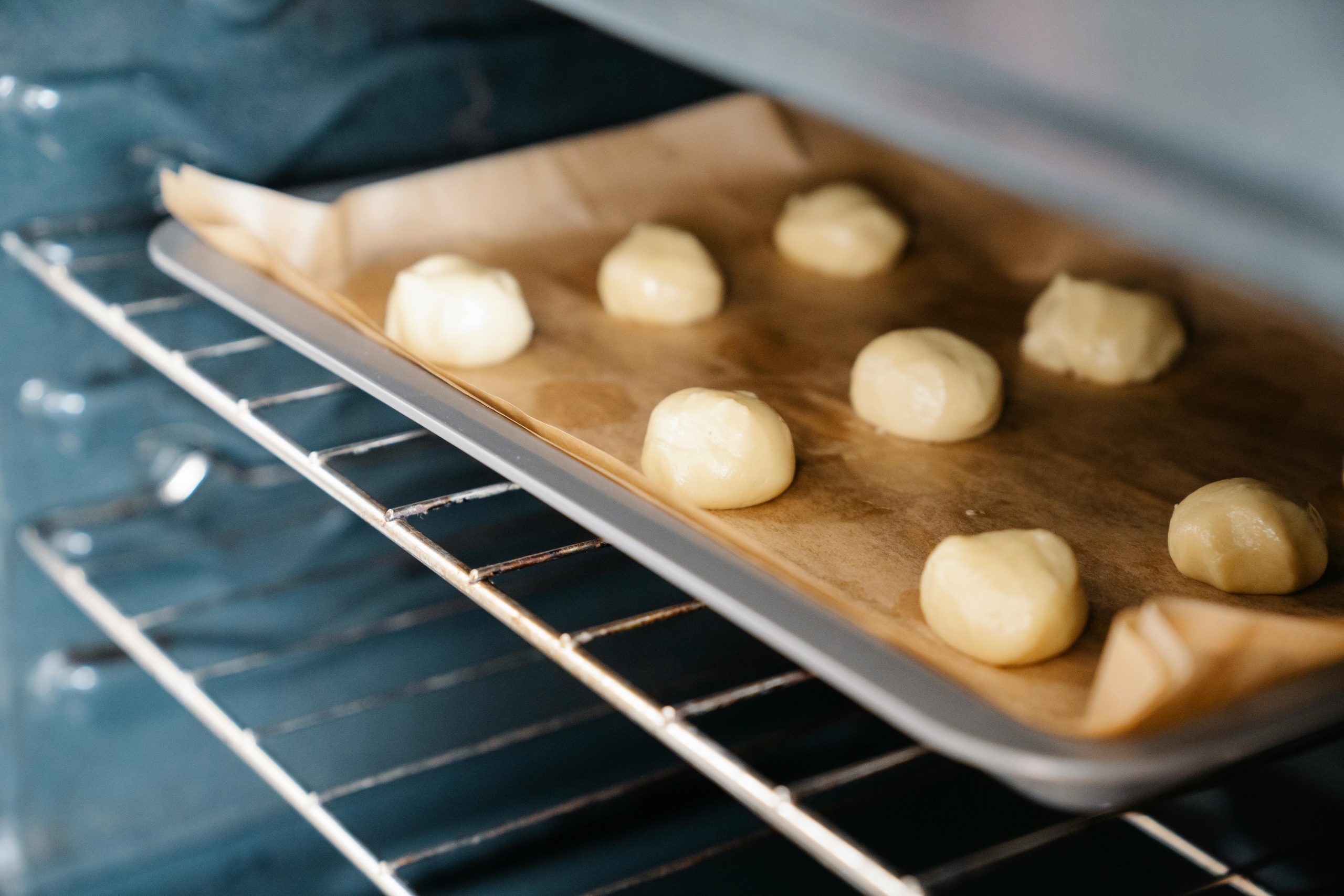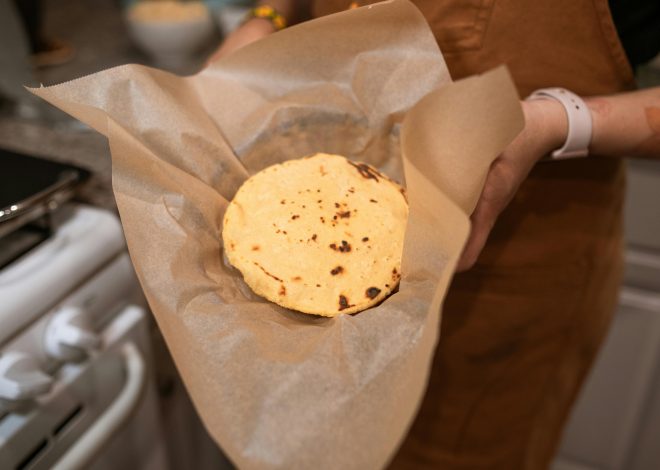
Can Parchment Paper Go in the Microwave? Safety Tips You Should Know

Parchment paper is a common tool in many kitchens. It’s used for baking, roasting, and even steaming food. But can parchment paper go in the microwave? The short answer is yes—but there are some important things to know before you do.
In this article, we’ll explain how parchment paper works, when it’s safe to use in the microwave, and offer tips for using it properly. Whether you’re heating leftovers or steaming vegetables, you’ll be able to cook with confidence.
What Is Parchment Paper?
Parchment paper is a type of paper that’s coated with a thin layer of silicone. This coating makes the paper non-stick, heat-resistant, and water-resistant. It’s often used in baking to line cookie sheets or cake pans, so food doesn’t stick.
There are two main types of parchment paper:
- Bleached: White in color and treated with chlorine.
- Unbleached: Brown and chlorine-free.
Both types work the same in the microwave, so you can use either depending on your preference.
Is Parchment Paper Microwave Safe?
Yes, parchment paper is generally safe to use in the microwave. It won’t catch fire, melt, or release harmful fumes under normal microwave conditions. In fact, most brands of parchment paper are made to handle high temperatures—often up to 420°F (215°C)—which is well above the heat produced by a microwave.
Unlike materials like plastic wrap or aluminum foil, parchment paper is specially designed to be heat-resistant and non-toxic. That makes it a popular choice for heating, steaming, and reheating food quickly in the microwave.
Why It’s Safe:
- Non-metallic: It doesn’t contain any metal, so it won’t spark or cause fires like aluminum foil might.
- No plastic coating: Many microwave-safe parchment papers are free from synthetic coatings, which means they won’t melt or release chemicals.
- Resists heat & moisture: It holds up well against steam and heat, making it ideal for covering dishes or wrapping food items while microwaving.
- Lightweight but strong: Even though it’s thin, parchment paper stays stable and doesn’t shrink or wrinkle much when exposed to microwave heat.
Always Read the Label First
Even though most parchment paper is microwave-safe, it’s still a good idea to check the packaging. Look for labels that say “microwave-safe” or include heating guidelines. Some specialty parchment papers (like colored or wax-coated varieties) may have different safety rules.
If you’re unsure, test a small piece in the microwave with a cup of water for 30 seconds. If the paper stays cool and doesn’t curl or discolor, it’s likely safe to use.
When Should You Use Parchment Paper in the Microwave?
Parchment paper is a great tool for microwave cooking and reheating. It’s safe, easy to use, and helps prevent messes while keeping food moist and flavorful. Here are some of the most common and effective ways to use parchment paper in your microwave:
1. Covering Food
Use a sheet of parchment paper to loosely cover bowls or plates when reheating food. This acts like a microwave-safe lid and prevents splatters without trapping too much moisture. Unlike plastic wrap, parchment paper won’t melt or stick to your food.
- Great for: Soups, casseroles, pasta, and saucy dishes
- Tip: Leave a small gap on one side to let steam escape
2. Steaming Vegetables
You can steam vegetables quickly by wrapping them in a parchment paper pouch (also called a papillote). Just chop your veggies, season them lightly, and fold the paper into a sealed envelope. Microwave for a couple of minutes, and the steam will cook them gently and evenly.
- Great for: Broccoli, carrots, green beans, zucchini
- Tip: Add a few drops of water before sealing the pouch for extra steam
3. Reheating Leftovers
Parchment paper works well as a barrier between greasy foods and your plate. Placing it under foods like pizza, fried chicken, or bacon helps absorb some of the oil and makes cleanup easier. It also prevents grease from pooling at the bottom of the dish.
- Great for: Pizza slices, wings, hash browns, sausage
- Tip: Fold the edges slightly to create a shallow tray
4. Cooking Fish or Chicken
Microwaving proteins in parchment paper is a smart way to trap moisture and enhance flavor without using extra fat or oil. Simply season your fish or chicken, wrap it in parchment paper, and cook until done. It keeps the texture tender and prevents drying out.
- Great for: Salmon, tilapia, chicken breast
- Tip: Add lemon slices, herbs, or a splash of broth for extra flavor
Tips for Using Parchment Paper in the Microwave
Using parchment paper in the microwave is generally safe, but it’s important to follow a few simple rules to prevent accidents or uneven cooking. These tips will help you use parchment paper effectively and safely:
1. Use Small Pieces
Trim parchment paper to fit your plate, bowl, or baking dish. Large sheets that touch the microwave walls can cause overheating or catch fire.
- Best practice: Cut it to just slightly larger than the food or container.
2. Avoid Crumpling
Keep the parchment paper smooth and flat. Crumpled paper can create hot spots that may lead to scorching or uneven cooking.
- Tip: Gently press it into place instead of balling it up.
3. Don’t Use Metal Clips or Staples
Never secure parchment paper with metal items like staples, twist ties, or clips. Metal is not safe in the microwave and can cause sparks or fire.
- Avoid: Paper packaging with built-in metal parts.
4. Keep It Flat or Loosely Wrapped
If you’re wrapping food, don’t seal it too tightly. Leave room for steam to escape, which helps cook the food evenly and safely.
- Example: Fold the edges loosely or tuck them under the food.
5. Watch the Cooking Time
Parchment paper is heat-resistant, but it’s not meant for long, high-power microwave sessions. Start with short cooking times and keep an eye on it to avoid burning.
- Warning: If the edges begin to brown, stop the microwave immediately.
Parchment Paper vs Other Materials
Let’s compare parchment paper to other materials commonly used in the microwave:
| Material | Microwave Safe? | Notes |
| Parchment Paper | ✅ Yes | Safe and heat-resistant. |
| Wax Paper | ✅ Yes (short-term) | Safe for reheating but not for long cooking—can melt. |
| Plastic Wrap | ⚠️ Some Types | Use only microwave-safe plastic wrap and avoid contact with food. |
| Aluminum Foil | ❌ No | Can cause sparks or fire—never use in microwave. |
| Paper Towels | ✅ Yes | Safe but may overheat if used too long. |
| Brown Paper Bags | ❌ No | Not food-safe; can release toxins or catch fire. |
Parchment paper stands out as one of the safest and most useful options for microwave cooking.
When Not to Use Parchment Paper in the Microwave
While it’s generally safe, there are a few situations where you should avoid using parchment paper:
- Deep-frying food: Parchment paper can’t handle oil at very high temperatures.
- Touching heating elements: If your microwave has a grill or convection setting, keep parchment paper away from direct heat.
- Prolonged high-heat cooking: Don’t use it for cooking that takes over 10–15 minutes at high microwave power.
What About Compostable or Decorative Parchment Paper?
If you’re using decorative parchment paper (with printed patterns or colors), check to make sure the ink is microwave-safe. Some inks may not be food-safe or may melt under heat.
Compostable parchment paper is usually safe, but again, always read the packaging to confirm it’s microwave-friendly.
Benefits of Using Parchment Paper in the Microwave
Here are some of the main advantages of using parchment paper when cooking or reheating food:
- No mess: Keeps the microwave clean by preventing splatters.
- Even heating: Helps food heat more evenly, especially when wrapped.
- Non-stick surface: Food won’t stick to it like plastic wrap or plates.
- Less oil: Reduces the need for added oils or sprays.
How to Store Parchment Paper Safely
Proper storage can help your parchment paper stay clean, dry, and ready for use in the microwave.
Follow these tips:
- Keep it in its original box or a zip-top bag to protect it from moisture or spills in the kitchen.
- Avoid humid environments like under the sink, as humidity can cause it to wrinkle or lose effectiveness.
- Label microwave-safe versions if you use multiple types (like decorative or compostable ones) to avoid confusion.
Proper storage helps ensure the parchment paper maintains its non-stick coating and microwave-safe quality.
FAQs About Parchment Paper in the Microwave
Can parchment paper catch fire in the microwave?
It’s very unlikely unless it’s touching a heating element or microwaved too long. Always follow safe usage guidelines.
Is wax paper the same as parchment paper?
No. Wax paper is coated with wax, which can melt or smoke in the microwave. Use only for short tasks like reheating.
Can I reuse parchment paper?
You can reuse it a couple of times if it’s clean and not burnt. But it may weaken and become brittle after use.
Final Thoughts: Can Parchment Paper Go in the Microwave?
Yes—parchment paper can go in the microwave and is one of the safest options for microwave cooking and reheating. It’s heat-resistant, non-stick, and helps control mess while keeping your food moist and flavorful.
Whether you’re steaming vegetables, covering a bowl of soup, or cooking fish, parchment paper is a helpful tool. Just remember to use it safely—avoid metal, don’t overheat, and always read the label for microwave-safe confirmation.
Much like choosing the right cooking method, selecting the right kitchen tool—like parchment paper—can make all the difference in how your meal turns out.


